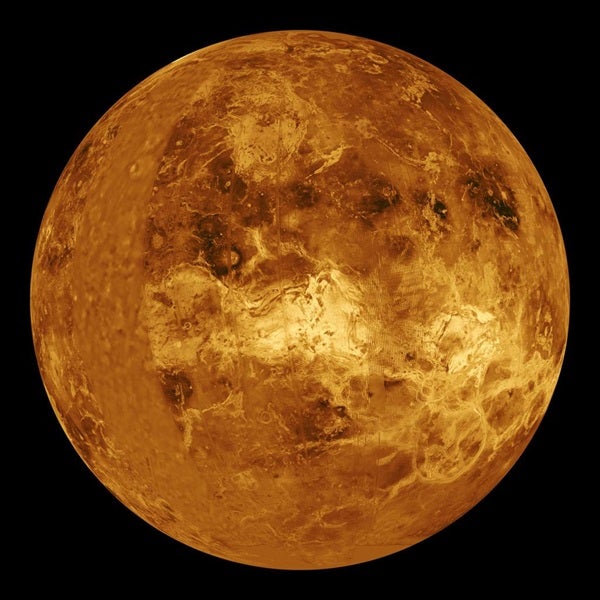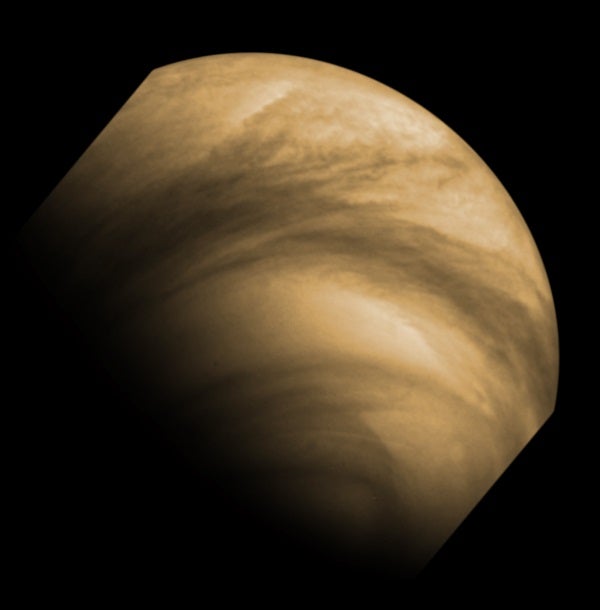Venus is enshrouded by a thick atmosphere of carbon dioxide. Beneath sulfuric acid clouds, the planet experiences the greenhouse effect gone wild, with surface temperatures climbing above 880 degrees Fahrenheit (470 degrees Celsius). Not only is the ground a gloomy, hazy place, it’s also akin to standing a full mile (1.6 kilometers) under the ocean on Earth, thanks to the immense pressure exerted by the planet’s heavier atmosphere.
The planet is also an oddball among its solar system brethren save one: of the planets that circle our Sun, only Venus and Uranus rotate retrograde, or backwards relative to the direction of their orbits around the Sun. Even stranger, the year on Venus is shorter than its day: Venus circles the Sun once every 225 Earth days, but it takes 243 days to rotate once on its axis. Furthermore, based on observations taken by different spacecraft over a decade apart, astronomers have determined that Venus is slowing down — over the course of 16 years, its day lengthened by about 6.5 minutes.
This overview of Venus by Bob Berman covers the planet’s strange, slow rotation, extreme surface conditions, and more.
Mars and Venus are surprisingly similar
Venus and Earth are a lot alike. But, it turns out, so are Venus and Mars.
How windy is it on Venus?
Venus Express answers this question with three-dimensional data on Venus’ atmosphere.
Was Venus once a habitable planet?
Venus and Earth are very similar … but could our sister world have ever hosted life?
Venus holds warning for Earth
Studying Venus’ atmosphere could help us determine the best — and worst — steps to take to mitigate climate change.
Hot lava flows discovered on Venus
Venus Express data showed several “hot spots” on Venus’ surface that changed daily, indicating volcanic activity.
Venturing into the upper atmosphere of Venus
Venus’ upper atmopshere turned out to be even more variable than originally thought.
Venus Express goes gently into the night
Venus Express orbited the planet for eight years, sending back a wealth of data before its mission ended in 2014.
Glenn Chaple’s Observing Basics: The phases of Venus
This column gives a brief explanation of how to spot the changing phases of Venus, just like Galileo.
NASA may make a mechanical computer to navigate Venus’ surface
As we look ahead to the future, NASA considers missions that might allow landers to survive on Venus for extended missions.
Tour the solar system: Venus
Astronomy senior editor Richard Talcott takes you on a brief video tour of the second planet from the Sun.

Would you like to learn more? Check out our free downloadable eBook: Venus and Mercury: Hot, volatile planets











